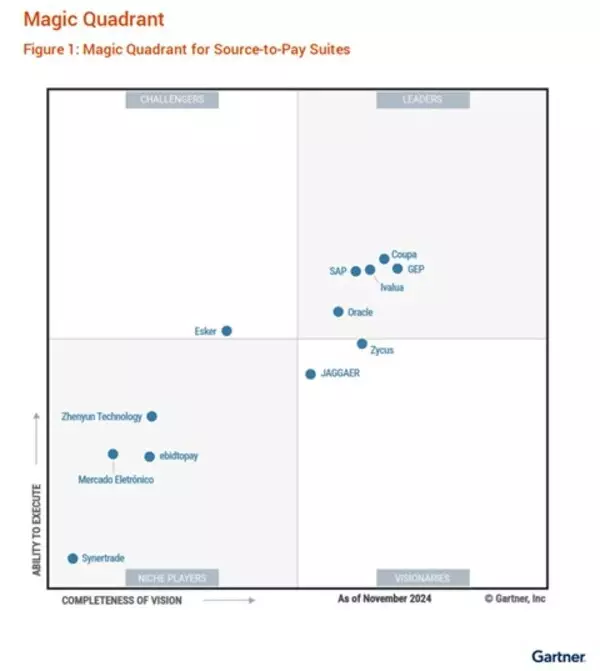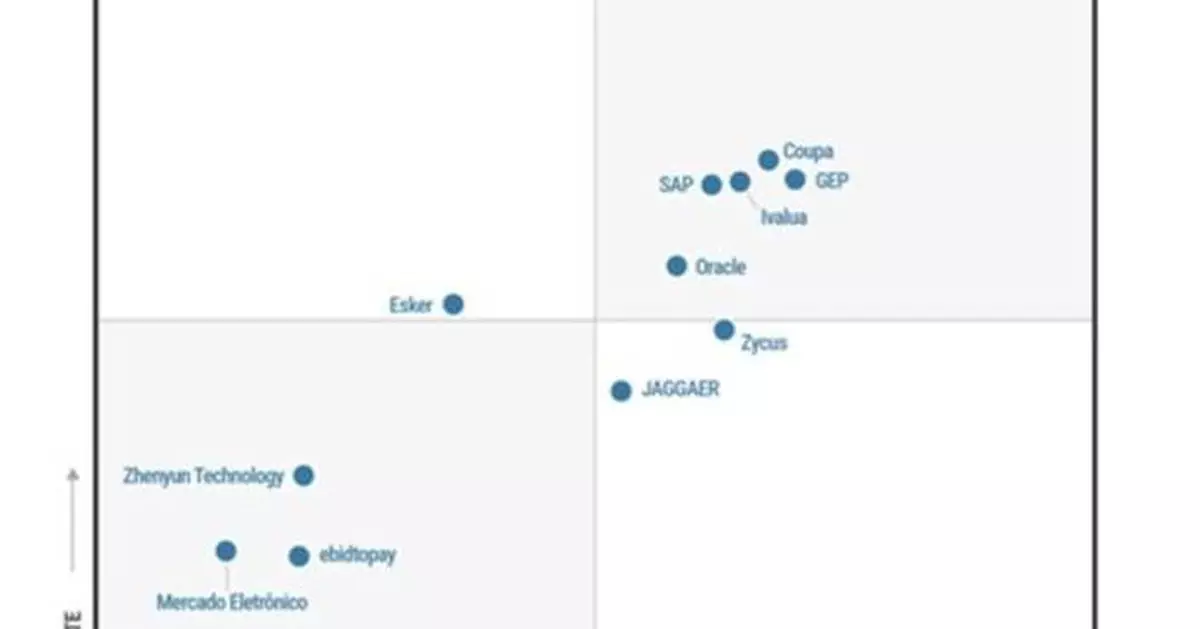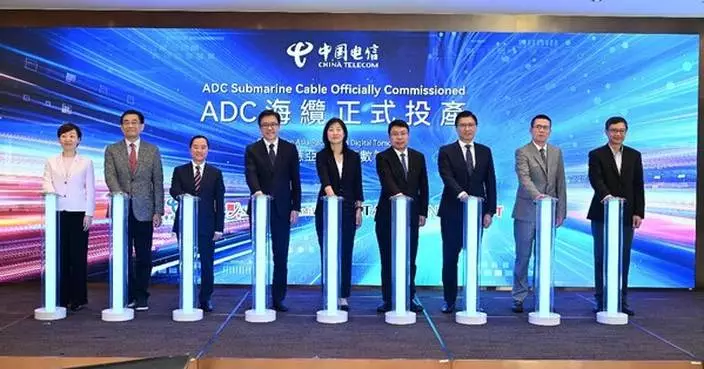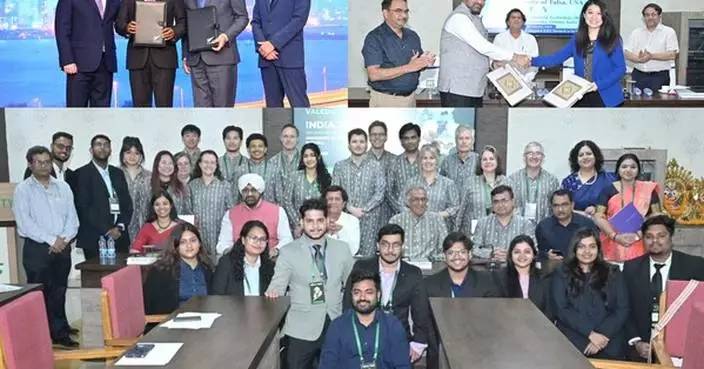CLARK, N.J., March 26, 2025 /PRNewswire/ -- GEP®, a leading provider of AI-powered procurement and supply chain software for Fortune 500 and Global 2000 enterprises worldwide, today announced that Gartner has positioned GEP SOFTWARE as a Leader in the 2025 Magic Quadrant for Source-to-Pay (S2P) Suites. This evaluation was based on specific criteria analyzing the company's overall "Completeness of Vision" and "Ability to Execute." Click HERE to download your complimentary copy of 2025 Gartner Magic Quadrant for S2P Suites and learn more about why GEP is named a Leader.
"We believe, Gartner recognizing us as a Leader in this year's Magic Quadrant underscores the transformative impact of our AI solutions in simplifying our customers' procurement and supply chain operations, since transactions are increasingly executed by non-procurement users," said Santosh Nair, GEP's chief product officer. "With GEP Quantumâ„¢ we are pushing the boundaries of AI-driven automation and intelligence, empowering enterprises to drive efficiency, resilience, and strategic value at scale."
GEP SOFTWARE encompasses GEP SMARTâ„¢, named the world's best procurement software for the second year in a row, GEP NEXXEâ„¢, the next-generation cloud-native supply chain unified platform, and GEP GREENâ„¢ to measure and advance sustainability. GEP SOFTWARE is powered by GEP QUANTUMâ„¢, the industry's leading AI-first, low-code platform.
A Gartner Magic Quadrant is a culmination of research in a specific market, giving you a wide-angle view of the relative positions of the market's competitors. Providers are positioned into four quadrants: Leaders, Challengers, Visionaries, and Niche Players. The research enables businesses to align market analysis with their unique business and technology needs.
About GEP SOFTWAREâ„¢
GEP SOFTWARE provides AI-powered digital procurement and supply chain platforms that help global enterprises become more agile, resilient, competitive and profitable. With beautifully rendered interfaces and flexible workflows, GEP provides users fresh, intuitive digital workspaces that yield extraordinary levels of user adoption and meaningful gains in team and personal productivity. GEP products capitalize on machine learning and cognitive computing, advanced data and semantic technologies, IoT, mobile and cloud technologies, and are designed to incorporate continual innovations in technology. GEP's software integrates quickly and easily with third-party and legacy systems, such as SAP, Oracle and all other major ERP and F&A software. And with superb support and service, GEP is an industry leader in customer satisfaction and loyalty. GEP's cloud-native software and digital business platforms consistently win awards and recognition from industry analysts, research firms and media outlets, including Forrester, IDC, Procurement Leaders and Spend Matters. GEP SOFTWARE is part of Clark, NJ-based GEP — the world's leading provider of AI-powered procurement and supply chain software, strategy and managed services. To learn more, visit www.gepsoftware.com.
Gartner disclaimer
Gartner Magic Quadrant for Source-to-Pay Suites, 24 March 2025
Authored by: Micky Keck, Kaitlynn Sommers, Balaji Abbabatulla, Cian Curtin, Lynne Phelan, Chaithanya Paradarami, Martin Shreffle
GARTNER is a registered trademark and service mark of Gartner, Inc. and/or its affiliates in the U.S. and internationally, MAGIC QUADRANT is a registered trademark of Gartner, Inc. and/or its affiliates and is used herein with permission. All rights reserved.
Gartner does not endorse any vendor, product or service depicted in our research publications, and does not advise technology users to select only those vendors with the highest ratings or other designation. Gartner research publications consist of the opinions of Gartner research organization and should not be construed as statements of fact. Gartner disclaims all warranties, expressed or implied, with respect to this research, including any warranties of merchantability or fitness for a particular purpose.
Media Contact
Derek Creevey
Director, Public Relations
GEP
Phone: +1 732-382-6565
Email: derek.creevey@gep.com
** The press release content is from PR Newswire. Bastille Post is not involved in its creation. **

GEP PLACED IN THE LEADERS QUADRANT IN GARTNER® 2025 MAGIC QUADRANT™ FOR SOURCE-TO-PAY SUITES
QIONGHAI, China, March 30, 2025 /PRNewswire/ -- The Sub-forum on Religious Harmony and Mutual Learning Among Civilizations took place at the BFA (BFA) Annual Conference 2025 on March 28. The sub-forum focused on the theme "Countless Dharma Doors Converge in a Square Inch: A Discussion on the Future of Digitization Project of Buddhist Scriptures." The gathering brought together 12 eminent monks and cultural researchers from six countries and regions to explore the current state and future of digitizing Buddhist scriptures. Chaired by Venerable Master Yin Shun, Vice President of the Buddhist Association of China, and President of the Buddhist Association of Hainan Province, the event aimed to advance the preservation and development of Buddhist culture through international collaboration.
BFA’s 10th Religious Sub-forum Highlights Global Digitization Project of Buddhist Scriptures
BFA's Decade of Progress: A Solid Foundation for the Future
Yin Shun, reflecting on the ten-year journey of the BFA Religious Sub-forum, noted its steadfast commitment to the foundational goal of building a global community united by a common destiny. The sub-forum has been instrumental in promoting religious harmony and fostering cross-cultural dialogues, while also enhancing international cooperation in the fundamental domains of religion, culture, education, philanthropy, and healthcare. A notable achievement of the sub-forum has been in the area of digital preservation and accessibility of Buddhist teachings. It has effectively used digital technology to compile the Encyclopedic Dictionary of Chinese Buddhist Terms and has facilitated the digital translation of Buddhist classics across the economically important Pan-South China Sea region. Furthermore, it has proposed initiatives to raise the digitization of these texts as a major national concern. The South China Sea Buddhist Academy, China's premier international Buddhist educational platform targeting Southeast Asia, has made significant contributions by educating 106 international students from several nations, most notably from Laos, Mongolia, Cambodia, and Nepal, and, by doing so, playing a crucial role in the international effort to digitize Buddhist scriptures.
Digital Empowerment: Advocating for the Chinese Adaptation of Buddhism
Ven. Guang Quan, Deputy Secretary General of the Buddhist Association of China and President of the Buddhist Association of Zhejiang Province, noted the crucial role of digitizing Chinese Buddhist scriptures in enhancing the international dissemination of Buddhist culture. He highlighted the accomplishments of Hangzhou Lingyin Temple in this area, including the development of an AI-based OCR engine for ancient books, production and tool platforms for digitizing ancient books, and a Buddhist scriptures reading hub. Building on these advancements, efforts are underway to digitize Buddhist canons, citing, in particular, the Jingshan Canon, the Yongle Northern Canon and the Siji Canon. Guang Quan's initiatives aim to further the interconnection of civilizations through digital technology, breathing new life into Asian Buddhist wisdom in the digital realm.
Bhikshu HUIMIN, President, Comprehensive Buddhist Electronic Text Archive Foundation (CBETA) Taiwan, China, reflected on the establishment of the Electronic Buddhist Text Initiative (EBTI). He provided an overview of the current status of global Buddhist text digitization, highlighting its evolution from digital archives (DA) to digital humanities (DH). Additionally, he unveiled the groundbreaking concept of Artificial Intelligence and Brain-Computer Interface (AI - BCI) for the digitization of Buddhist culture. He stressed that the transition of Buddhism from traditional scriptures to cloud-based platforms represents not only the future of Buddhism but also a new civilization where mindfulness and technology merge.
Hong Xiang, Research Assistant at the Centre of Buddhist Studies, The University of Hong Kong, highlighted the transformative impact of digital technology on the collation and proofreading of the Dunhuang manuscripts, starting from the digitization project. He noted that the preservation of the Dunhuang manuscripts, which embody the essence of a multi-faceted and symbiotic civilization, demands interdisciplinary collaboration. Moreover, he advocated for global resource sharing in the digitization of Buddhist scriptures.
Zhu Cuiping, Editor-in-Chief of Zhonghua Book Company GuLian (Beijing) Digital Media Tech Co., Ltd, China, pointed out that the digitization of Buddhist scriptures is an enormous undertaking that requires a collaborative effort among the government, religious organizations, universities, research institutes, and publishing entities. She called for the initiation of a global initiative to compile Buddhist literature to drive the worldwide project of digitizing Buddhist scriptures.
International Cooperation: Jointly Advancing the Global Digitization Project of Buddhist Scriptures
The sub-forum placed particular emphasis on the contributions of Japanese and Korean Buddhism to the digitization of Buddhist scriptures. KAWANAKA KOKYO, Director-General of Administration of Jodoshu, Japan, presented the "Digitization of ZÅjÅ-ji's Three Great Buddhist Canons" project. He urged all parties to collaborate in furthering the global effort to digitize Buddhist scriptures, with the aim of fostering a more peaceful and harmonious future for humanity.
JONG-RIM, Honorary Chairman of Tripitaka Koreana Research Institute, Jogye Order of Korean Buddhism, shared insights from the digitization efforts of the Tripitaka Koreana at Haeinsa Temple in Korea. He proposed the future goal of completing a comprehensive Tripitaka and developing a dictionary of concepts and terms utilizing digital technology.
South China Sea Buddhist Friendship Circle: Fostering Digital Connections
The sub-forum highlighted the role of the South China Sea Buddhist Friendship Circle in the digitization of Buddhist scriptures. Ven. PHRAPROMMASITH (Thongchai Sukkayano) Supreme Patriarchs, elaborated on Thailand's experience in safeguarding Buddhist cultural heritage. He urged international cooperation to facilitate the digitization of Buddhist scriptures, aiming to provide convenient access to anyone anywhere with an interest in reading and better understanding the Dharma.
SANDI MARBHIVAMSA, Chairman of Sangha Maha Nayaka Committee, Myanmar, and Ven. (Dr.) KIRINDE ASSAJI, Chief Prelate (Malwatta Chapter) Sanghanayaka of Sri Lanka's Western Province, provided insights into the current state of Buddhism in their respective countries and the advancements made in the digitization of Buddhist scriptures. They both expressed a strong willingness to collaborate with Buddhist communities from other nations in these endeavors.
Looking to the Future: Consultation, Collaboration, and Sharing
Ven. YAN JUE, President of the Buddhist Association of China, concluded by emphasizing that Buddhist scriptures represent a shared cultural heritage of humanity. He noted that their digitization presents not only a technical challenge but also a cultural mission. He also underscored the commitment of the Chinese Buddhist community to the global governance principles of consultation, collaboration, and sharing. By partnering with Buddhist and academic communities worldwide, they aim to advance the digitization of Buddhist texts, share the outcomes of these efforts, and further disseminate the teachings and scriptures of Buddhism.
** The press release content is from PR Newswire. Bastille Post is not involved in its creation. **

BFA's 10th Religious Sub-forum Highlights Global Digitization Project of Buddhist Scriptures





















































